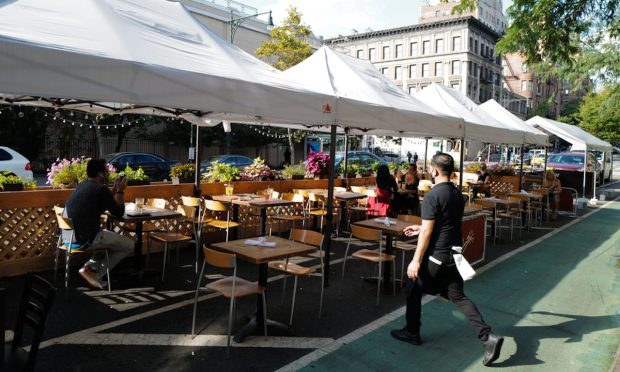Restaurants Leverage Learnings From Previous Outbreaks to Take on Omicron

The rapid spread of the omicron variant may spell bad news for the restaurant industry, but today’s eateries are better able to handle the challenges of stay-at-home norms and social distancing measures than they were at the start of March 2020.
Cases are skyrocketing. Per the U.S. Centers for Disease Control and Prevention (CDC) data, there have been 51 million cases in the last 30 days, and as of Monday (Dec. 20), the number of daily new cases has more than doubled since the start of the month.
Yet, restaurants are prepared. Where previously the instant surge in demand for off-premise, low-contact ordering and payment options caught many off guard, now these businesses can benefit from the changes they have made to their stores and to their digital presences over the past couple of years.
For instance, where previously digital orders made up only a small fraction of restaurants’ sales, now they are a core part of even table-service establishments’ business models, according to data from PYMNTS’ 2021 Restaurant Readiness Index, created in collaboration with Paytronix. The Index, which surveyed more than 500 managers of quick-service and full-service restaurants across the United States last spring, found that by that point, 32% of sales for restaurants with table service came from digital orders, and that figure jumped to 47% for quick-service restaurants (QSRs). In fact, for chain QSRs, digital orders make up a full 55% of their sales.
Moreover, across establishments, inside-the-restaurant sales make up only 19% of all sales, and even for full-service restaurants (FSRs), they account for just 27%. Other channels, including safer on-premise dining via outdoor seating as well as the various digital and traditional off-premise options, account for the vast majority of sales.
Restaurants have been equipping themselves with contagion-friendly options at a rapid pace. PYMNTS research shows that restaurants stepped up their digital offerings significantly, even in the five months between September 2020 and April 2021. In that time, the share of restaurants offering the ability to pay online grew dramatically, increasing 77%, and the portion offering consumers the ability to pay with digital wallets grew 24%.
Surprisingly, in this time, the availability of rewards programs and of drive-thru pickup took a hit, as did the number of establishments offering the ability to pick up orders without standing in line. Still, with restaurants honing their focus on omnichannel availability, they will not be blindsided by further waves of the virus as they were when the pandemic first spread.
Additionally, restaurants have experience checking proof of vaccines and ensuring the safety of their staff. For example, CNBC reported on Wednesday (Dec. 22) that Danny Meyer will now require indoor diners and staff to have both their two initial shots and a booster.
Now, as mobility rises and falls with each new outbreak, restaurants will need to make sure their digital tools are doing everything they can to reduce contagion concerns, from assisting in checking for safety measures such as proof of vaccination to offering the ability to reduce face-to-face at each step of the way.
As Alex Lee, vice president and general manager of Resy and the American Express Global Dining Network, told Karen Webster in an interview, “Especially in a COVID environment, where the beginning of your meal starts with worrying about your vaccination proof, and the end of your meal is going through payments, if we remove those two elements and the anxiety around them, we’re able to just focus on the dining experience.
